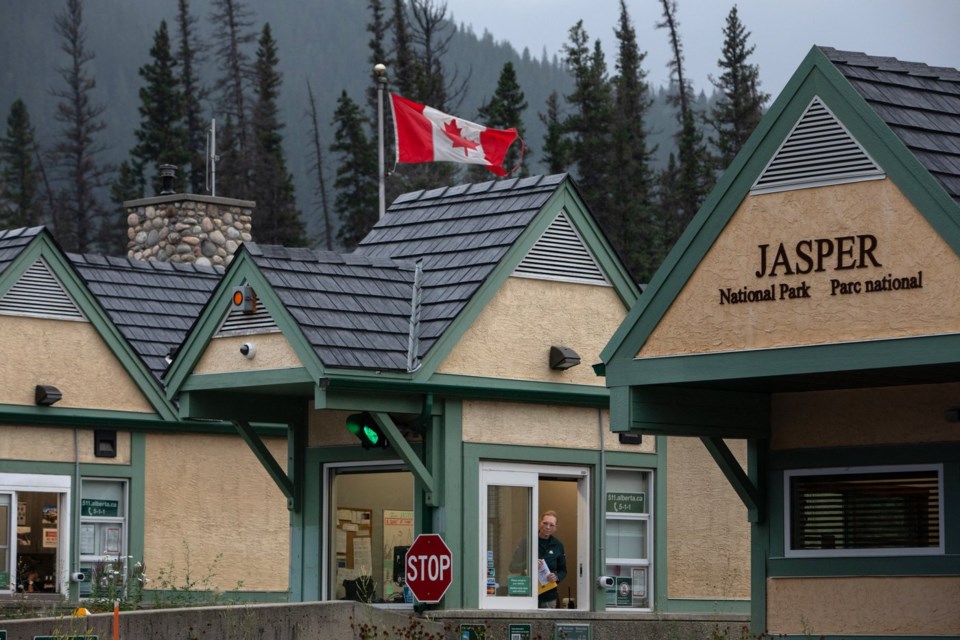JASPER, ALTA. — Every summer for 61 years, tourists have piled onto Jasper’s SkyTram to see the boomerang-shaped town nestled inside the sprawling Rocky Mountains. It'll happen again this summer, but the view will be different.
The red cable cars will skim over thousands of trees poking up from the ground like charred matchsticks. From the top, a third of the town’s structures have vanished from sight.
It doesn't change that Jasper is still open for business, and that’s what matters as the town prepares for its first summer since a runaway wildfire ripped through it last July.
“There are certainly positive signs, but we won’t be back to 100 per cent – that is clear,” said Jasper Mayor Richard Ireland.
The winter has been sleepier than normal, and the tourist-reliant town needs visitors this summer. Fewer restaurants have been open, though many more will restart as the snow melts, said one business owner.
Between campsite closures and several hotels that were destroyed in the fire, less space for tourists will likely result in a 20 per cent decline in business revenue, the Jasper Chamber of Commerce recently told town council.
The community is nevertheless inviting tourists to visit.
Whether to hone that message was a sensitive debate last fall, as grieving locals worried tourists would come to gawk at the damage.
“There’s less and less of a balance required,” said Ireland, the only mayor Jasper has known since it became a municipality in 2001. “People have now had eight months to come to terms with their individual losses.”
Some business owners expect revenues to drop in line with fewer visitors.
"Jasper needs tourists more than ever,” said Stavro Korogonas, owner of Jasper Pizza Place.
Korogonas lost his home in the fire and has been living in Kelowna, B.C., since last August, visiting Jasper about twice a month for his business. He and his wife plan to move back when an interim housing unit becomes available for them.
The past few months have been challenging for locals, he said. The initial excitement of returning has worn off, and the emotional toll of the destruction has cast a pall over the town. Many said they avoid travelling into the destroyed Cabin Creek neighbourhood.
“No one I’ve talked to has a success story,” Korogonas said. “We have so many people just in my close friend group who we know have spent their last day living in Jasper.”
No lost homes have been rebuilt to date, though interim housing units were trucked into the town in February. Empty foundations that smouldered for more than a week after the fire have been filled with dirt. The charred shells of a few structures, including an almost 100-year-old Anglican Church, have yet to be demolished.
And while a third of the town’s structures were decimated by the fire, large parts of Jasper remain intact. Most of the town’s commercial strip wasn’t impacted and the residential neighbourhood on the east side of town was also untouched.
Around the townsite, evidence of Mother Nature’s wrath is unmistakable. Roadsides have been cleared so dead trees don’t fall onto the highway, leaving rows of downed blackened forest criss-crossed in piles for about 30 kilometres south along the Icefields Parkway. Other trees still standing have been stripped bare.
The mayor said several campsites and trails are set to reopen, but a formal list hasn’t been released. Parks Canada did not make officials available for an interview.
Jasper is not the first municipality to be devastated by wildfire. A 2016 fire that ripped through Fort McMurray, Alta., destroyed about 2,400 homes, far more than the 318 structures lost in Jasper.
But the Jasper fire was the first in a tourism-reliant community.
There's a prevailing attitude that the carnage can teach lessons to visitors on the impacts of climate change, how forests regenerate through wildfire and how towns can prepare.
“You can still look and see how beautiful it was, but there’s that stark reality right next door,” said Paulette Dubé, a local writer and retired teacher. In the fall, she started a project with the local library, compiling art and writing from Jasperites processing the destruction.
“Everything is black and gone and scorched. This is actually, I think, a really good time to come and see this, because you can do that comparison and you can be on the ground floor of Jasper rebuilding herself.”
Ireland similarly said the landscape can provide a “learning opportunity” for visitors.
“I think there will be tour groups now that use that change in the landscape to educate those tourists who are interested in learning about wildfire on the landscape. Not necessarily the benefit we were looking for, but an opportunity for certain.”
While visitors can avoid seeing the urban destruction, views of the charred forest surround the town from all sides.
“Honest to God, look up, because the mountains are still there. Turn your head and look at the other side — there’s still trees,” Dubé said.
“But it’s really good to have that reminder that we are not the gods. We are not the kings of this place. We’re just sort of scurrying around at the foot of these giants, and they’re the ones who decide whether there’s going to be fire or not.”
This report by The Canadian Press was first published April 5, 2025.
Matthew Scace, The Canadian Press



